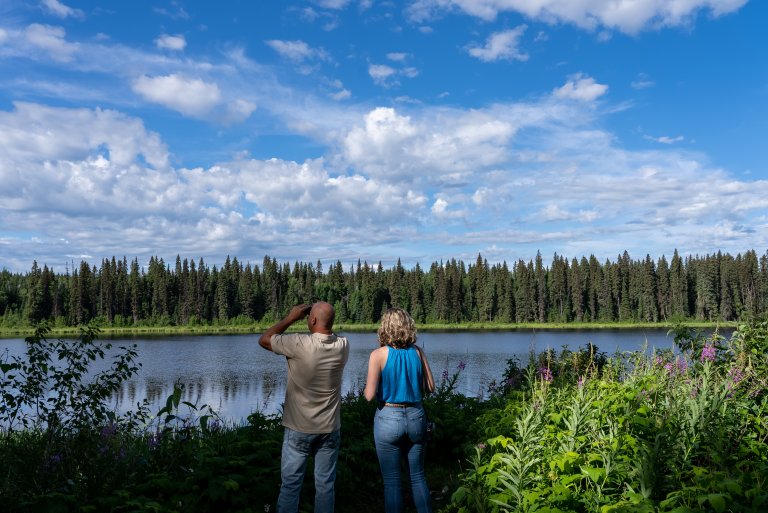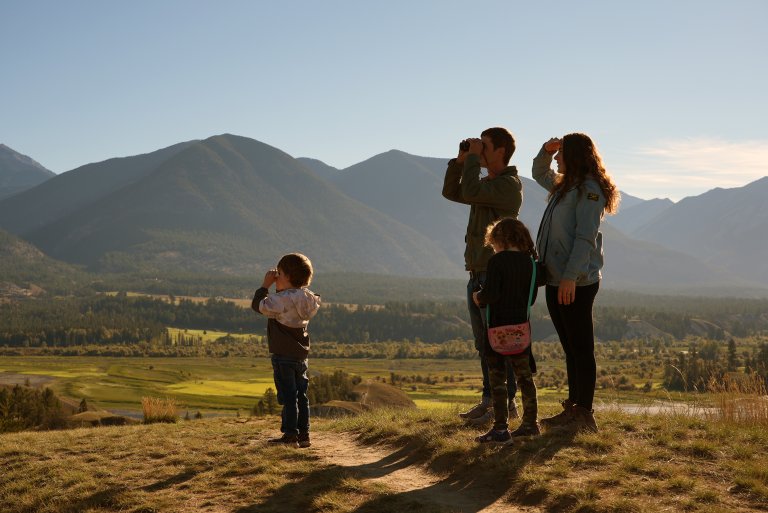If you’re travelling around BC’s west coast this summer, chances are you’ll find yourself aboard a ferry once or twice. Whether you’re sailing from Vancouver to Vancouver Island, island-hopping through the Southern Gulf Islands, cruising the Sunshine Coast, or venturing up to Haida Gwaii, these ferry routes are prime opportunities for pelagic birding.
Pelagic birding (searching for birds on open water) is typically reserved for dedicated expeditions, often requiring chartered boats. But hopping on a ferry offers a much more convenient alternative. These everyday sailings provide easy access to species you rarely spot from land, making them a surprisingly rewarding option for birders of all levels. Ferry rides open up a world of ocean birdlife without the hassle, whether you’re an avid birder or just looking to kill some time on your voyage
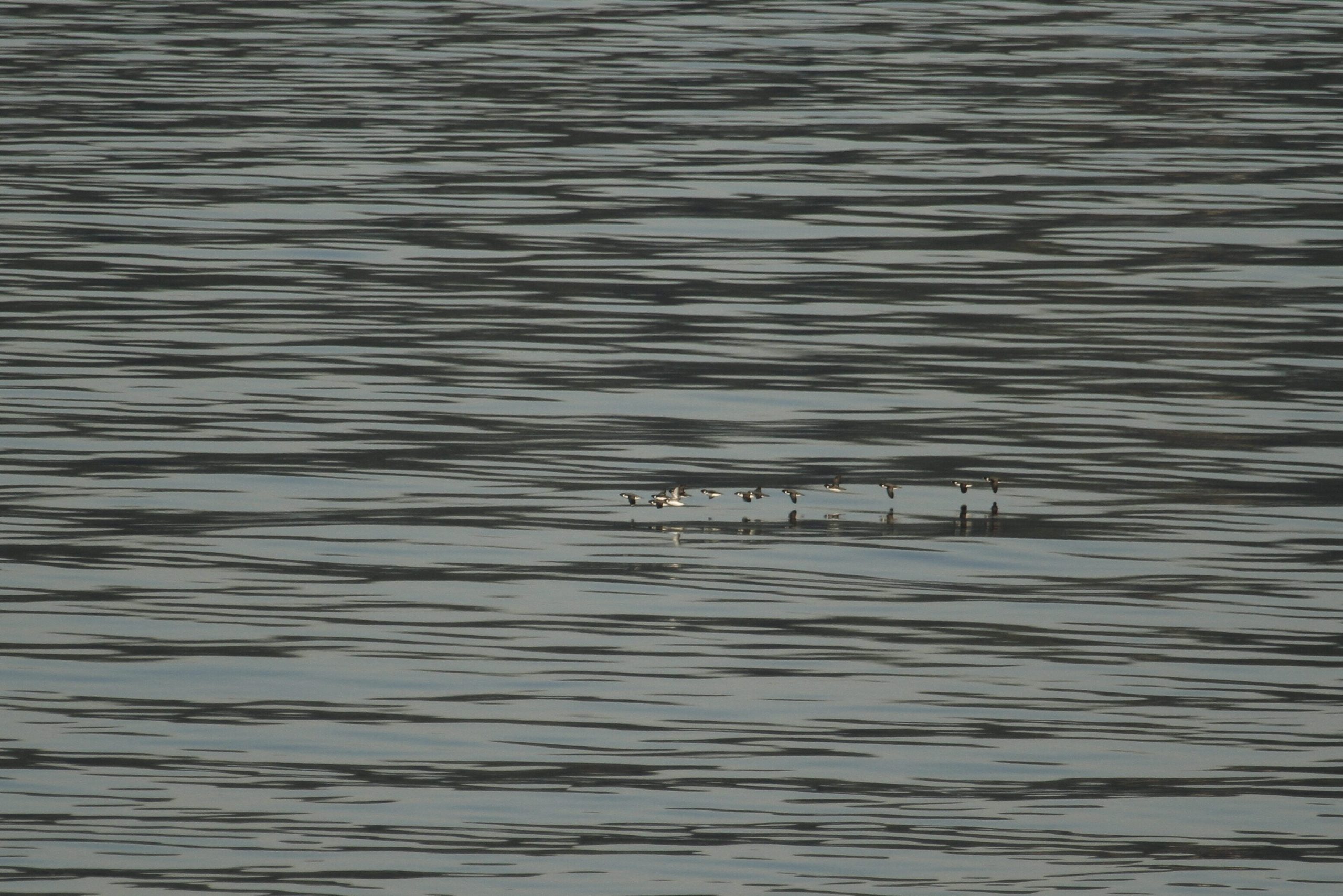
Make the Most of the Open Water
If your ferry has outdoor observation decks, be sure to head outside—they offer the best vantage points for spotting seabirds. Don’t forget your binoculars, as most birds won’t come too close to the ferry. Even on warm days, the wind can make things surprisingly chilly. Holding binoculars in the breeze for an hour can numb your fingers fast, so consider bringing gloves. During colder months, an extra layer or windproof jacket is a must. And no matter the season, pack your sunscreen!
Use your binoculars (or camera with a decent zoom lens) to scan the water and along the shorelines. Look for activity on the water, as oftentimes if there’s some good eating, there will be a commotion of birds. Otherwise, keep scanning the waters for birds flying over the surface or popping back up from diving for food.
What Birds Are Out There?
The thing that makes pelagic birding so exciting is that a lot of the birds you’ll see live primarily out on the water. They rarely stay on land for long, mostly just for breeding purposes.
Here are some pelagic birds you could see on your next ferry ride through the Strait of Georgia or the Salish Sea.

Of course, several different species of gulls can be seen throughout the year, including the small Mew Gulls that can be seen either bobbing in the water or hovering above the surface, and the dark-with-bright-orange-beak Heermann’s Gulls that like to hang out on sandy beaches and in kelp beds just offshore.

Many birds in the alcid family can be seen out on the open waters: the dapper, black-and-white Common Murres, Pigeon Guillemots, which are often seen closer to rocky coastlines and have bright orangey-pink feet, and Marbled and Ancient Murrelets, with the Marbled having a while collar that separates its dark crown and back, as well as a shorter dark bill. An especially eye-catching member of the family is the Rhinoceros Auklet, which appears to have a horn on top of its beak and streaking feathers coming from its head that can make you think you’ve found a puffin (their close relatives) at first glance.
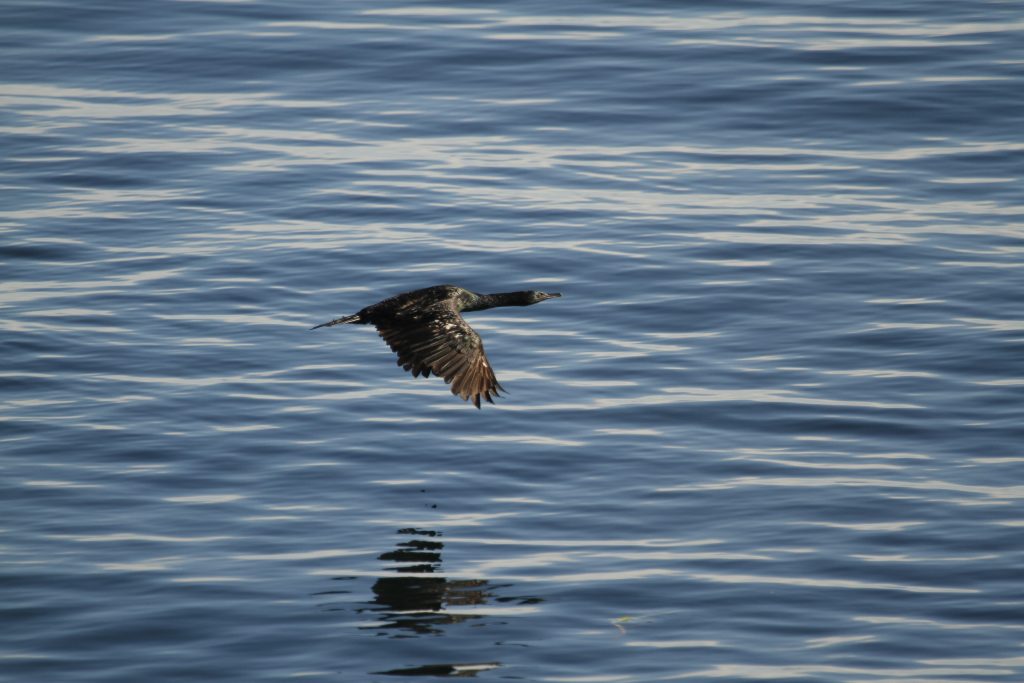
Double-crested, Pelagic, and Brandt’s Cormorants are amazing to see flying low over the water. They are all identifiable by their long necks and hooked bills. Double-crested and Brandt’s are common in Active Pass while foraging in water depths, while the Pelagic are usually closer to shore, foraging over submerged reefs and rocky areas. If you’re closer to shore, watch for the iconic spread-winged sunning behaviour cormorants use to dry off after being in the water.
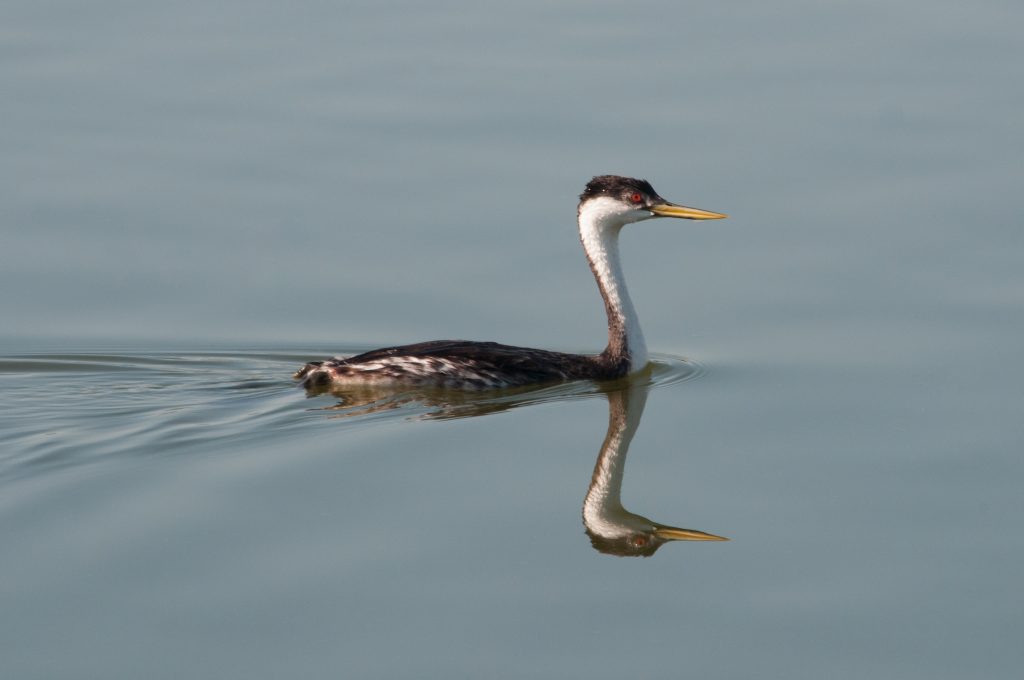
Grebes like the large Western Grebe can sometimes be seen floating around on the water. Look for birds with long necks, black-and-white plumage with a yellow bill, and red eyes.
If you see a gull that looks particularly aggressive, look closer in case it’s one of our three species of Jaegers (Parasitic, Pomarine, and Long-tailed), predatory birds that act like pirates, stealing food from other seabirds.
Common, Pacific, or Red-throated are the most common Loons to see from the ferry. Watch for slender cormorant-like birds that hold their heads low in flight over the water.
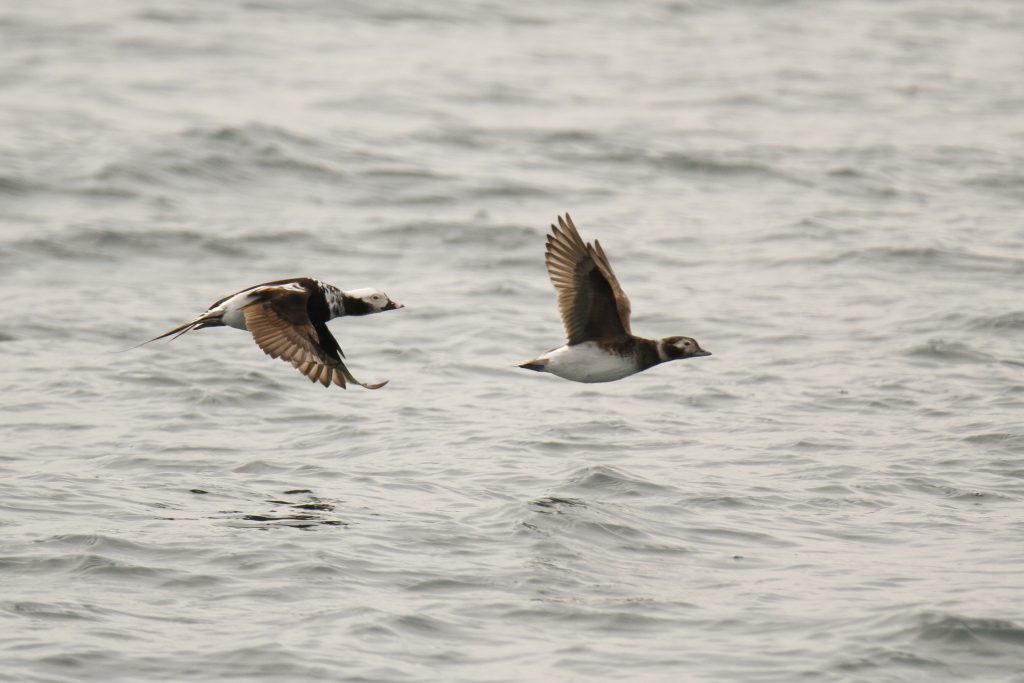
Long-tailed Ducks aren’t often seen, but if you get lucky, you might see this majestic-looking sea duck with extravagantly long, slender tail feathers.
In addition to the pelagic birds, when going through Active Pass or passing close to shorelines, Eagles or Ospreys can sometimes be seen flying over beaches or perched on trees along the water’s edge.
Of course, it’s not just birds you can see out on BC’s coastal waters. Keep an eye out for whales, dolphins, seals, and sea lions.
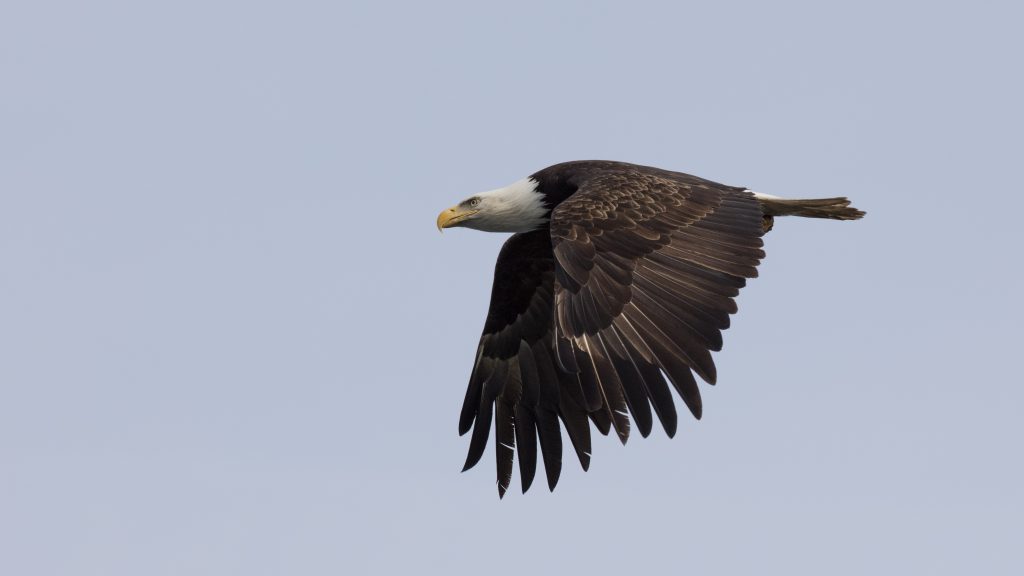
We hope this helps pass the time on your next ferry voyage and introduces you to a unique aspect of the bird world. Happy birding! Looking for new birding hot spots to explore? Check out all BC Bird Trails here!

